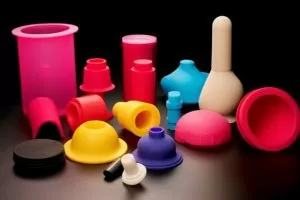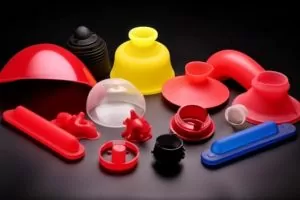Introduction:
Quality control plays a vital role in ensuring the excellence of silicone rubber products. Maintaining high standards of quality is essential to achieve customer satisfaction and remain competitive in the market. Silicone rubber products find extensive applications in various industries, including automotive, electronics, medical, and consumer goods. In this article, we will explore the importance of quality control in silicone rubber products and how it impacts customer satisfaction and market competitiveness.
Effective quality control in silicone products encompasses various aspects, such as rigorous raw material inspection, robust manufacturing processes, thorough testing for physical properties, and adherence to industry regulations. By implementing these measures, plastic manufacturers can ensure that their silicone rubbers products meet the highest quality standards and perform optimally in diverse applications.

In conclusion, quality control is of utmost importance in the production of silicone rubber products. It not only ensures customer satisfaction but also enhances market competitiveness. By emphasizing quality control measures, manufacturers can deliver superior silicone rubber products, strengthen their reputation, and thrive in today’s competitive market.
II. Quality Control in Silicone Rubber Production process
A. Raw Materials
1.Inspection and Selection of Raw Materials:
Thoroughly inspect the quality and characteristics of raw materials used in silicone rubber production.
Evaluate the purity and consistency of silicone compounds, additives, and fillers.
Conduct quality checks to ensure the materials meet the required specifications.

2.Sourcing from Reliable Suppliers:
Establish partnerships with trusted and reliable suppliers of raw materials.
Conduct due diligence to verify the supplier’s reputation, quality control processing, and adherence to industry standards.
Regularly assess and monitor the performance of suppliers to maintain consistent quality standards.
B. Manufacturing Processes
1.Standardized Operating Procedures:
Develop and implement standardized operating procedures (SOPs) for each stage of the manufacturing process.
Clearly define the steps, parameters, and requirements for each process.
Train employees on the SOPs to ensure consistent execution and minimize errors.
2.Automation Technologies for Consistency:
Integrate automation technologies, such as programmable logic controllers (PLCs) and robotics, into the manufacturing processing.
Automate critical tasks to reduce human errors and ensure consistent production quality.
Regularly calibrate and maintain the automation equipment to ensure accurate and reliable performance.
By focusing on quality control in the raw materials and manufacturing processes, manufacturers can enhance the overall quality of siliconeproducts. Thorough inspection and selection of raw materials, along with sourcing from reputable suppliers, lay the foundation for consistent quality. Implementing standardized operating procedures and leveraging automation technologies ensures that the manufacturing processes are executed consistently and efficiently. These quality control measures contribute to the production of high-quality silicone rubber products that meet customer expectations and maintain a competitive edge in the market.

III. Testing and Quality Assurance
A. Physical Testing Methods
1.Tensile Strength Testing:
Measure the maximum amount of tensile (pulling) force a silicone rubber product can withstand before breaking or deforming.
Conduct standardized tests using specialized equipment to ensure accurate and consistent results.
Evaluate the tensile strength to ensure the product meets the required specifications for its intended application.
2.Tear Strength Testing:
Assess the resistance of silicone rubber products to tearing or ripping.
Perform tear strength tests by subjecting the material to controlled forces or using specific test methods.
Determine the tear strength to ensure the product can withstand potential stresses or strains.
B. Heat Resistance Testing
1.Evaluation under High-Temperature Conditions:
Expose silicone rubber products to elevated temperatures to assess their performance and stability.
Conduct heat resistance tests in accordance with relevant industry standards or specific application requirements.
Measure the product’s ability to maintain its physical properties and functionality under high-temperature conditions.
2.Suitability for Applications Exposed to Heat:
Test silicone rubber products to ensure they can withstand the heat generated during their intended applications.
Consider factors such as thermal conductivity, insulation properties, and resistance to thermal degradation.
Verify that the products are suitable for use in environments with elevated temperatures.
C. Chemical Resistance Testing
1.Assessing Resistance to Chemicals and Solvents:
Expose silicone product to various chemicals and solvents they may encounter in their intended applications.
Determine the material’s resistance to chemical interactions, including swelling, degradation, or loss of physical properties.
Conduct silicone testing following established procedures and standards to evaluate chemical resistance.

2.Prevention of Degradation:
Evaluate the impact of chemical exposure on silicone rubber products over time.
Perform long-term immersion or accelerated aging tests to assess the product’s resistance to chemical degradation.
Ensure that the product maintains its functionality and physical properties when exposed to specific chemicals or solvents.
D. Dimensional Accuracy Testing
1.Measurement Techniques for Precise Dimensions:
Utilize precise measurement tools and techniques, such as calipers, micrometers, or coordinate measuring machines (CMMs).
Accurately measure key dimensions, including length, width, thickness, and critical tolerances.
Verify that the silicone rubber products meet the required dimensional specifications.

2.Compliance with Specifications:
Compare the measured dimensions with the specified tolerances and dimensional requirements.
Ensure that the silicone rubber products meet the defined specifications and are within acceptable limits.
Address any deviations from the specifications to maintain consistent quality and functionality.
E. Aging and Durability Testing
- Accelerated Aging Conditions:
- Subject silicone rubber products to accelerated aging tests to simulate long-term exposure to environmental factors.
- Apply controlled conditions of temperature, humidity, UV radiation, or mechanical stress to evaluate product durability.
- Assess the product’s ability to withstand aging and maintain its performance over an extended period.
- Long-Term Durability and Stability Assessment:
- Monitor and evaluate the changes in the physical properties and performance of silicone rubber products over time.
- Conduct extended testing or gather field data to assess the long-term durability and stability of the products.
- Ensure that the products maintain their integrity and functionality throughout their intended lifespan.
Thorough testing and quality assurance procedures are crucial in ensuring the reliability and performance of silicone rubber products. By employing physical testing methods, heat resistance testing, chemical resistance testing, dimensional accuracy testing, and aging and durability testing, manufacturers can verify that the products meet the required specifications, perform as intended, and deliver long-term reliability to customers.
IV. Key Qualities of Silicone Rubber Products
A. Heat Resistance:
Silicone rubber products offer exceptional heat resistance, making them suitable for applications involving exposure to high temperatures. Their temperature fluctuations won’t compromise their physical properties or degrade performance over time – enabling these silicone rubber products to meet demanding environments like automotive engine components, electrical insulation, and high temperature sealing applications with efficiency.
B. Flexibility and Elasticity:
Silicone rubber products boast exceptional flexibility and elasticity, making molding simple while maintaining resilience. Their inherent flexibility enables them to adapt easily to dynamic movements while providing effective cushioning or sealing in applications requiring constant motion or vibration damping. Their elasticity enables them to return back into their original shapes after deformation, guaranteeing prolonged durability over repeated use.

C. Electrical Insulation:
Silicone rubber products stand out with their outstanding electrical insulating capabilities. Boasting both high dielectric strength and low electrical conductivity, silicone rubber serves as reliable protection from electrical shocks, short circuits, interference and more – providing effective insulation in applications where reliable protection from shocks is essential.
Silicone rubber products are well-suited to many industries due to their heat resistance, flexibility, elasticity and electrical insulation properties – qualities which have propelled their widespread adoption by automotive manufacturing, electronics production, aerospace applications, healthcare providers and many others that place high premium on reliability, performance and safety.
Manufacturers take advantage of these qualities to develop silicone rubber products tailored specifically for individual applications. Engineers and designers can tap into its heat resistance, flexibility, and electrical insulation properties to develop novel solutions that address industry requirements while satisfying consumers.
V. Enhancing the Properties of Silicone Rubber Products
A. Compound Modification:
To enhance the properties of silicone rubber products, manufacturers can modify the compound by adjusting its composition. This involves incorporating different additives, fillers, or reinforcing agents to improve specific characteristics. For example:
- Adding fillers like silica or carbon black can enhance the mechanical strength, stiffness, and wear resistance of silicone rubber.
- Introducing additives such as flame retardants or UV stabilizers can improve the product’s resistance to fire or degradation caused by sunlight exposure.

B. Crosslinking for Improved Mechanical Strength:
Crosslinking is a process that enhances the mechanical strength of silicone rubber products. By chemically bonding the polymer chains, the crosslinking process improves the material’s resistance to deformation, tear strength, and overall durability. This can be achieved through various methods, such as:
- Heat curing: Subjecting the silicone rubber compound to elevated temperatures to initiate crosslinking reactions.
- Addition of crosslinking agents: Incorporating specific chemicals or additives that facilitate crosslinking during the curing process.
C. Formulation Optimization for Desired Physical Properties:
Formulation optimization involves fine-tuning the composition of silicone rubber products to achieve specific physical properties. Manufacturers can adjust factors such as:
- Polymer types: Choosing the appropriate silicone polymer or elastomer with the desired characteristics.
- Crosslink density: Controlling the degree of crosslinking to achieve the desired balance of mechanical properties.
- Additive selection: Optimizing the types and amounts of additives, such as plasticizers or curing agents, to achieve specific physical properties like hardness, flexibility, or resistance to environmental factors.
By employing compound modification, crosslinking techniques, and formulation optimization, manufacturers can tailor the properties of silicone rubber products to meet diverse application requirements. This allows for the creation of customized solutions that excel in specific environments or under unique operating conditions. Through continuous research and development, manufacturers can further innovate and improve the properties of silicone rubber products to address evolving market needs.

Conclusion:
In the production of large quantities silicone rubber products, quality control plays a crucial role in ensuring the excellence and reliability of the final products. Throughout this article, we have highlighted the importance of implementing robust quality control measures and the benefits they bring to manufacturers.
Quality control is essential to maintain customer satisfaction. By consistently delivering high-quality silicone rubber products that meet or exceed customer expectations, manufacturers can establish a strong reputation for reliability and performance. Satisfied customers are more likely to become repeat customers, leading to increased loyalty and positive word-of-mouth recommendations.
In conclusion, quality control is of utmost importance in the production of silicones rubber products. By implementing robust quality control measures, manufacturers can ensure customer satisfaction, gain a competitive edge, and enhance their reputation in the market. Prioritizing quality control not only benefits the manufacturer but also contributes to the overall growth and success of the silicone rubber industry.



